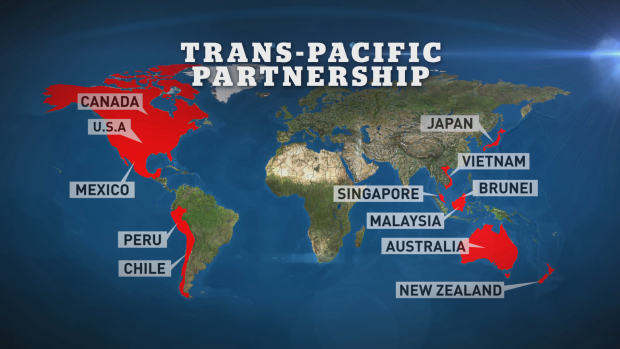The future of TPP
July 13, 2017 | Expert Insights

Chief negotiators from the 11 Trans-Pacific Partnership countries have met in Hakone, Kanagawa Prefecture in Japan for a three-day meeting to discuss the future of the trade deal and how it can advance without the inclusion of the United States.
The meeting comes just a week after Japan inked a significantly large free trade agreement with the European Union.
Background
The TPP was originally a free trade agreement between countries bordering the Pacific Ocean. Along with the US, a total of 12 nations signed the deal in 2016 to deepen their economic ties by reducing tariffs and foster trade to boost econominc growth. The signatories were: Australia, Brunei, Canada, Chile, Japan, Malaysia, Mexico, New Zealand, Peru, Singapore, the United States (until 23 January 2017) and Vietnam. At the time, it was the largest trade agreement in history and the 12 nations comprised of 40% of the world trade.
All 12 countries signed on the dotted line after seven years of negotiations. The former US President Barack Obama spearheaded the effort for five years before the deal came into effect. The vision was that the TPP would be similar to the European Union where a single market would eventually emerge.
However, it wasn’t without its critics in the United States.
Former Presidential candidate Bernie Sanders was against it noting that it “threatened” the US democracy. There were fears that this will result in loss of jobs in the US. The current President Donald Trump also opposed it deeming it to be a terrible deal. Hence, it wasn’t much of a surprise when he on January 23, 2017, signed an executive order formally withdrawing the US from the TPP.
Analysis
The US was the lynchpin that had held the agreement together. It accounted for 60% of the TPP's combined GDP. As it currently stands, the TPP must be ratified by six countries that account for 85% of the group's economic output. Thus, with the US backing out of the deal, it is defunct for the present.
But Japan is hoping to beat the odds. Being the largest economy among the 11 members, it is hoping to rally support and reach an agreement to alter those requirements. Time is of the essence as the leaders of these countries will be meeting at Asia-Pacific Economic Cooperation forum in Vietnam in November 2017.
Some of these countries may also demand fresh negotiations to re-work the tariffs. And Vietnam and Malaysia may not be keen to proceed with the deal without the US.
Japan is probably hoping that the esteem it has received from its recent deal with the European Union will be a positive influence on the TPP. The Japan-EU FTA would create the world’s largest economic zone. Details of the deal can be found here.
Assessment
Our assessment is that Japan will persevere with the deal hoping that President Trump might change his mind and resurrect TPP to its original standing. By withdrawing from the TPP, the US is likely to forfeit its geopolitical influence in the region. This is contrary to the optics that is presenting now in the South China Sea. We believe that the US will join the TPP at some point.








Comments